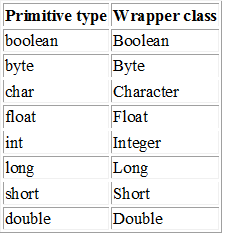Java Platform, Standard Edition 8 is a major feature release. Java 8 contains a large number of new features. Although all are important, the three
most important one are:
- Lambda expressions
- The stream API in java.util.stream
- Default interface methods
Lambda
Expressions
The
most important new Java 8 feature is the lambda expression.
Lambda
expressions are very important as they add functional programming features to
Java. Lambda expressions can simplify and reduce the amount of source code
needed to create certain constructs, such as some types of anonymous classes.
This is particularly helpful when implementing a number of commonly used event
handlers.
To
support lambda expressions Java has been expanded by the inclusion of a new
operator (the –>) and a new syntax element.
To
understand the benefits that lambda expressions bring, consider the following ActionEvent
handler, which uses the traditional, anonymous class, approach:
myButton.addActionListener(new ActionListener() {
public void actionPerformed(ActionEvent ae) {
myLabel.setText("Button pressed.");
}
});
|
With
JDK 8, this event handler can be written using a lambda expression
myButton.addActionListener(
(ae) -> myLabel.setText("Button pressed.")
);
|
As
we observe code is shorter, that is more direct and to the point.
The
Stream API
Another
important feature of Java 8 is the new stream API, which is packaged in java.util.stream.
A
stream represents a sequence of data. The key aspect of the stream API
is its ability to perform pipeline operations that search, filter, map, or
otherwise manipulate data.
Let’s
assume we have a list that stores employee names, department, e-mail and phone
numbers. Using the stream API, we can efficiently pipeline the operations that
search for entries that match some criterion, for example department name, sort
the matching items, and then extract only the e-mail addresses In many cases,
such actions can be performed in parallel, thus providing a high level of
efficiency. The stream API provides a powerful means of handling data in an efficient,
yet easy to use way.
Default
Methods
With
the release of Java 8, it is now possible for an interface method to define a
default implementation. This new capability is called the default method.
Default
method enables us a means by which interfaces could be expanded without
breaking pre-existing code.
In
simple terms default methods enable us to add new functionalities to interfaces
without breaking the classes that implements that interface.
When
a non-abstract class implements an interface, it must implement all methods
defined by that interface. If a new method is to an existing interface, then
the addition of that method would break pre-existing code, because no
implementation would be found for that new method in pre-existing classes. The
default method solves this problem by supplying an implementation that will be
used if no other implementation is explicitly provided. Thus, the addition of a
default method will not cause pre-existing code to break. This enables
interfaces to be gracefully evolved over time without negative consequences.



